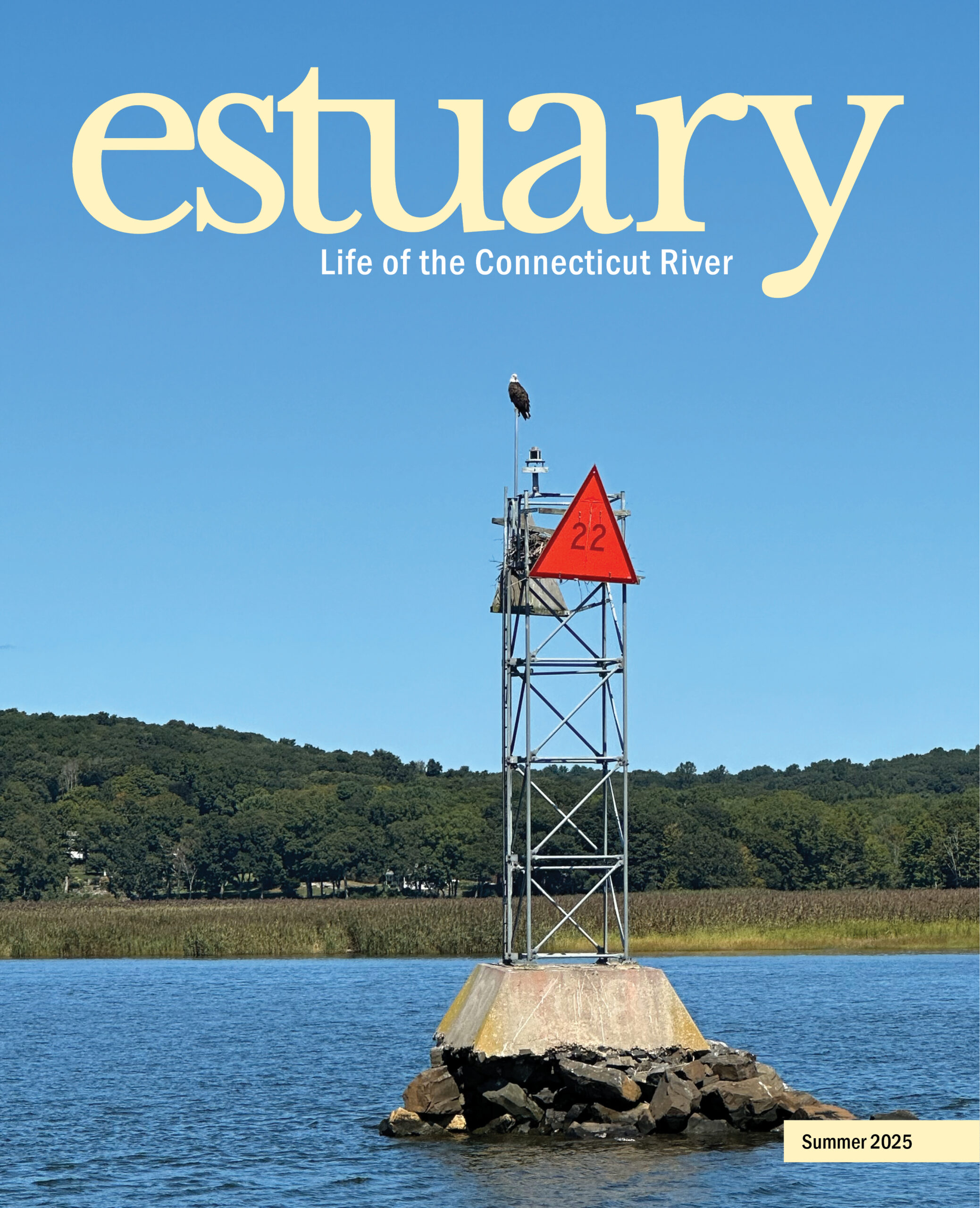 This article appears in the Summer 2025 issue
This article appears in the Summer 2025 issue

A Local Cemetery Inspires
Wild Ideas for Your Lawn
Looking for inspiration for an environmentally friendly lawn? I suggest you take a break and go for a walk in a local cemetery.
You weren’t expecting that, were you? I wasn’t either, until a friend asked me about plants that could help rewild a cemetery lawn in order to make it better for the environment. I was reminded of how often I walk at a nearby cemetery for the quiet, the open-grown specimen trees, the sense of history recorded in ancient carved headstones—and for the in situ, alternative lawn that often typifies graveyards.
Volunteer cemetery associations have a lot on their hands just keeping up with maintenance—mowing, weed-whacking around all the headstones, keeping the grounds open and neat; it dictates simplified stewardship. In these small graveyards, manicured turf grass gives way to a variety of more hearty, independent grasses and inevitably other adaptable plants. And that’s a good thing, as it’s the excess nutrients and chemicals added to manicured lawns that can negatively impact the environment. Instead, here we see firsthand which plants thrive with little attention. Invariably this includes non-native and sometimes invasive plants that we want to steer clear of. But there are also some lovely native plants that are ecologically friendly, that thrive in low maintenance locations, and that could be used to enhance your home landscape.
Cemetery site conditions often are open, level, and sandy. I remember one of my professors noting that many southern New England cemeteries were intentionally located in sandy glacial outwash where digging was easier. While tough for many plants (sandy soils are droughty and often nutrient-poor), these conditions are ideal for other plants that don’t ask for much. And that means they’re perfect for supplementing or replacing a manicured turf lawn.
Alternative lawns use grasses that require less inputs such as a hearty blend of cool-season hard and fine fescue grasses that make a “no-mow” mix. A “tapestry” or “bee” lawn incorporates low-lying plants, many of them flowering, that provide resources for native wildlife, including insects that are essential for pollination and the food web. These lawns can be mowed at heights of three to four inches, permitting low-growing flowers or plants with the capacity to easily reflower. Improved plant density and diversity over time also improves the soil.
A Cemetery-Inspired Alternative-Lawn Plant Sampler
Below are plants that are native to southern New England with several naturally occurring throughout the Connecticut River watershed. Most thrive in poor soil with little attention. Besides cemeteries, many of these plants can be found in uncultivated fields, along roadsides, and in open woods.
Dwarf Cinquefoil, Potentilla Canadensis
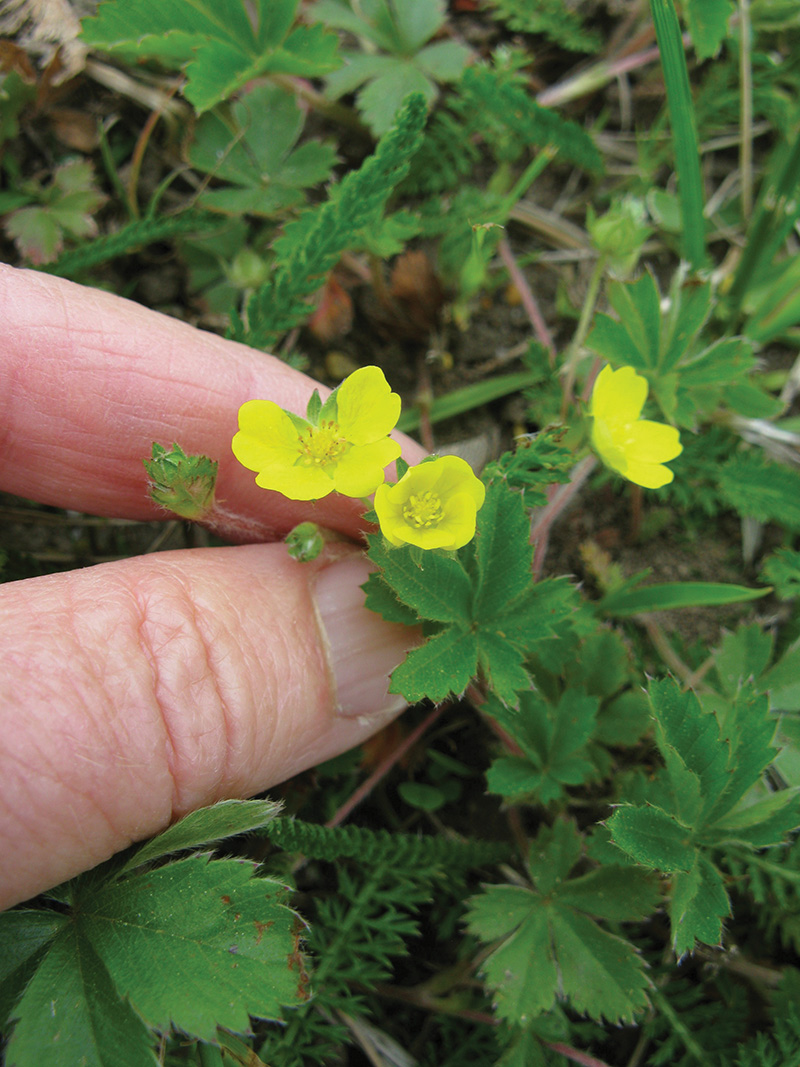 This common, low-lying plant (up to four inches in height) can form a large mat. It has bright yellow flowers and toothed leaves. Both flower and leaf are divided into five—hence the “cinque” in its common name. It is attractive to small bees and flies, and the seeds are eaten by birds; small mammals eat the leaves.
This common, low-lying plant (up to four inches in height) can form a large mat. It has bright yellow flowers and toothed leaves. Both flower and leaf are divided into five—hence the “cinque” in its common name. It is attractive to small bees and flies, and the seeds are eaten by birds; small mammals eat the leaves.
Appalachian Barren Strawberry, Geum fragarioides (formerly Waldsteinia fragarioides)
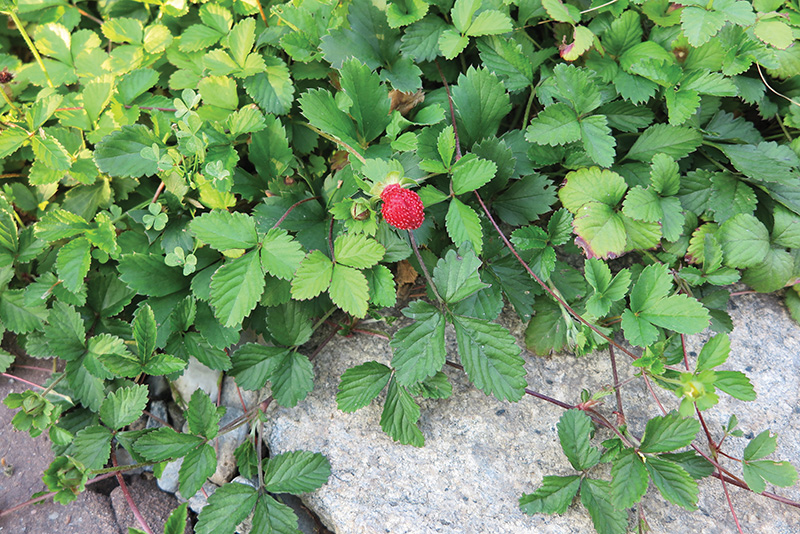 This very adaptable evergreen plant is often used as a groundcover, growing two to five inches tall. It has yellow, five-pedaled flowers and produces a small, dry, strawberry-like fruit. It has no serious insect or disease problems and is drought and salt tolerant, making it a hearty plant for many uses.
This very adaptable evergreen plant is often used as a groundcover, growing two to five inches tall. It has yellow, five-pedaled flowers and produces a small, dry, strawberry-like fruit. It has no serious insect or disease problems and is drought and salt tolerant, making it a hearty plant for many uses.
Field Pussytoes, Antennaria neglecta
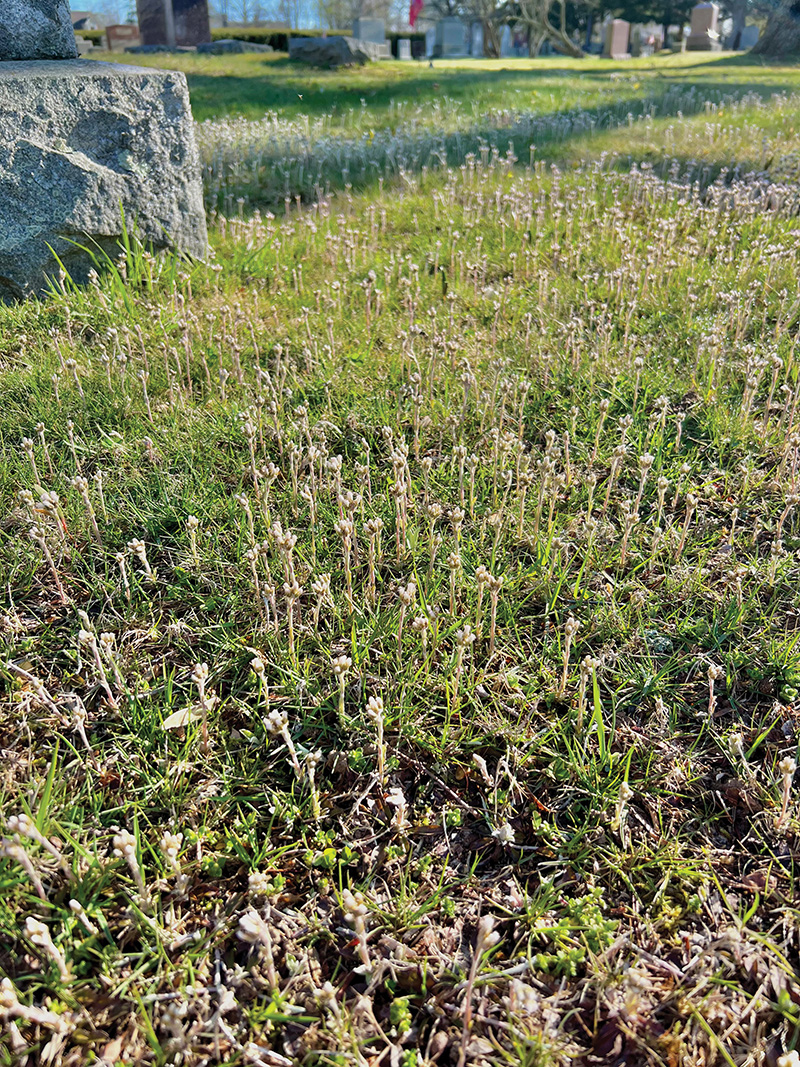 Pictured here in my local cemetery, field pussytoes are durable little plants described in one source as being happiest in “lean, gritty” soil in full sun. It is best appreciated in a mass, and up close, its stems, leaves, and clustered flower heads are all wooly. It’s said to get its common name because those clustered, wooly flower heads resemble the soft pads of a cat’s paw. This is a host plant for the caterpillar that emerges as one of our most attractive local butterflies, the American painted lady.
Pictured here in my local cemetery, field pussytoes are durable little plants described in one source as being happiest in “lean, gritty” soil in full sun. It is best appreciated in a mass, and up close, its stems, leaves, and clustered flower heads are all wooly. It’s said to get its common name because those clustered, wooly flower heads resemble the soft pads of a cat’s paw. This is a host plant for the caterpillar that emerges as one of our most attractive local butterflies, the American painted lady.
Self-heal, Prunella vulgaris
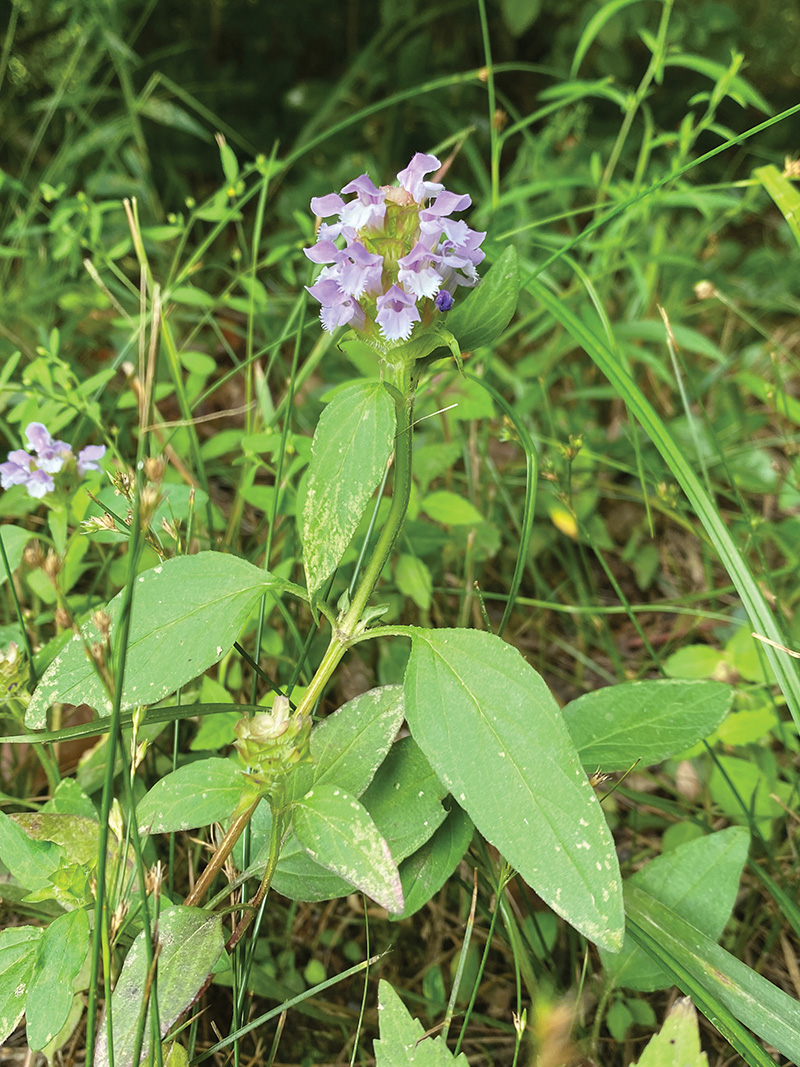 Self-heal is aptly named because of its many uses as a medicinal herb. It has a lovely cluster of fringed flowers that range from pale lavender to a deep purple. It varies in height from two to ten inches; because it is in the mint family it adapts well to mowing. It flowers June through August, attracting native bees (bumblebees and solitary bees), butterflies, and flies, and it is the host plant for the clouded sulfur butterfly caterpillar.
Self-heal is aptly named because of its many uses as a medicinal herb. It has a lovely cluster of fringed flowers that range from pale lavender to a deep purple. It varies in height from two to ten inches; because it is in the mint family it adapts well to mowing. It flowers June through August, attracting native bees (bumblebees and solitary bees), butterflies, and flies, and it is the host plant for the clouded sulfur butterfly caterpillar.
Pennsylvania Sedge, Carex pensylvanica

This diminutive plant is good for part- to full-shaded areas that mimic its preferred native habitat in the woodland understory. It is one of the earliest plants to blossom in the spring, sending an inconspicuous flower above its grass-like leaves in early May. This plant shines as a lawn alternative because of its resemblance to grass, although it handles only light foot traffic. It can be used as a groundcover in dry shade or planted under perennials as a living mulch. Once established it can be mowed as little as two or three times a year.
Sedges in general are well worth investigating in the home landscape because of their diversity, low maintenance, visual interest, and increasing availability from the nursery industry. While Carex pensylvanica is the most grass-like in size, many other varieties, such as the Appalachian sedge can be used in masses to enhance wildlife habitat plantings.
Quaker Ladies, Houstonia caerulea
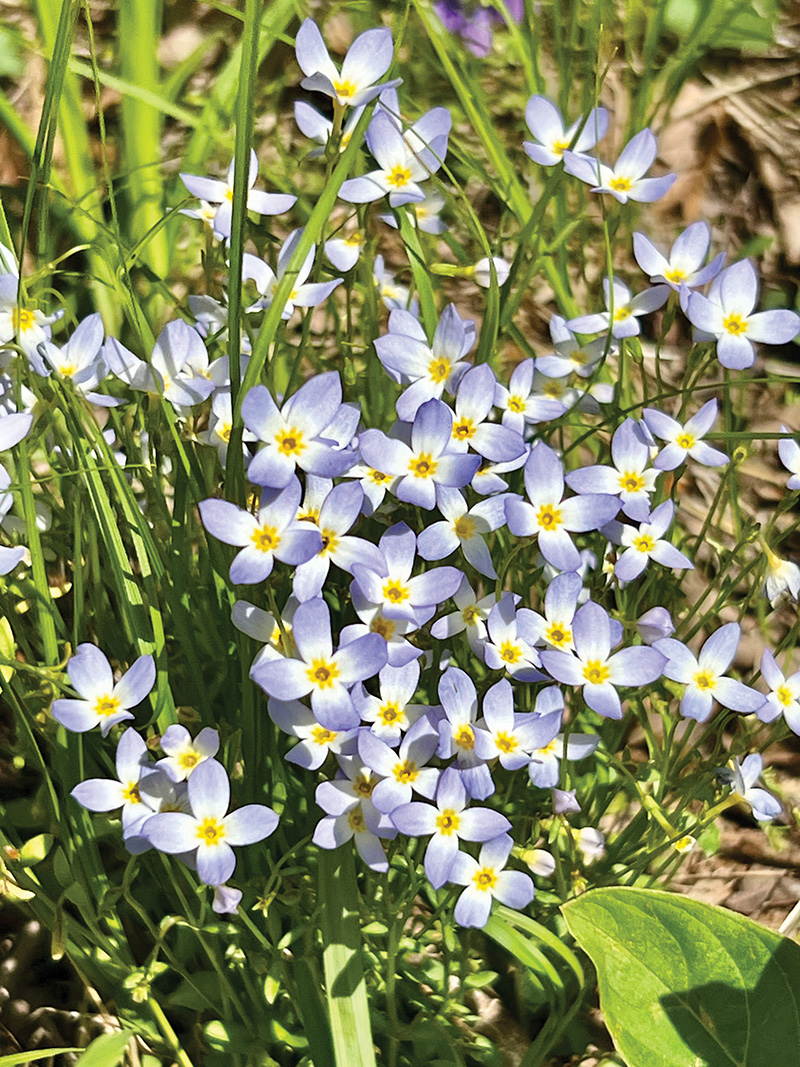
Also commonly called Bluets, these blue flowers with white throats and a touch of yellow can occur in broad swaths, but they only last for several weeks. Although found in lawns, it does not do well with a lot of plant competition or foot traffic. I often find them interspersed in clumps of moss and lichen. What they may lack in endurance these plants make up for in shear cheerfulness, and for the fact that they attract interesting and less commonly seen fauna such as little carpenter bees (Ceratina spp.), green metallic bees (Halictidae), bee flies (Bombyliidae), and small butterflies.
My list is growing of rugged and little-known plants that can enhance an otherwise low diversity (and possibly high demand) traditional lawn. Availability is always an issue, although that is changing—especially if you ask for these plants by name at your local plant centers.
In future issues, we will circle back to take a closer look at natural habitats that can inspire ways to bring native plants—and animals—into our yards and community landscapes. Nature has a remarkable palette!
Judy Preston is a local ecologist active in the Connecticut River estuary.
